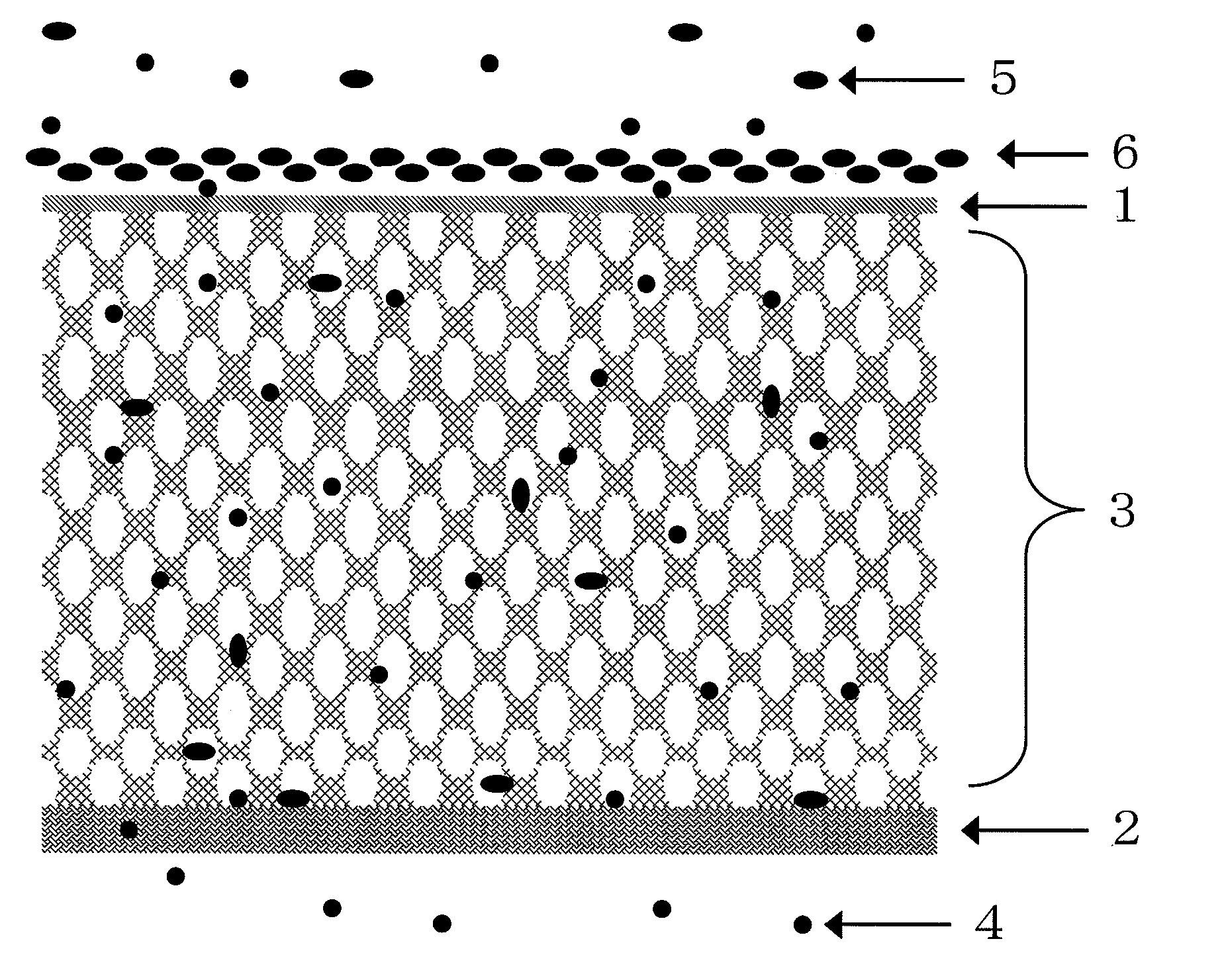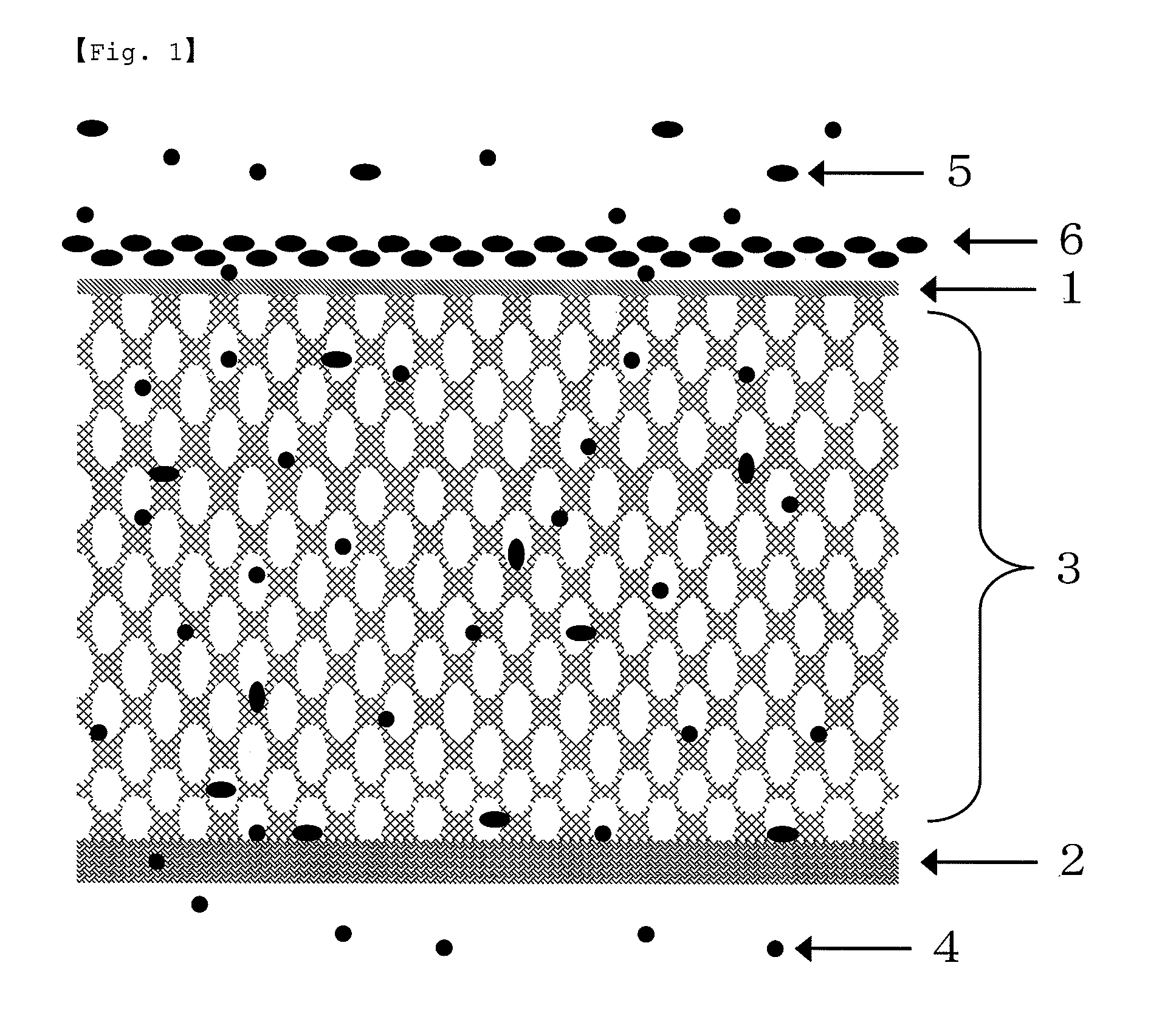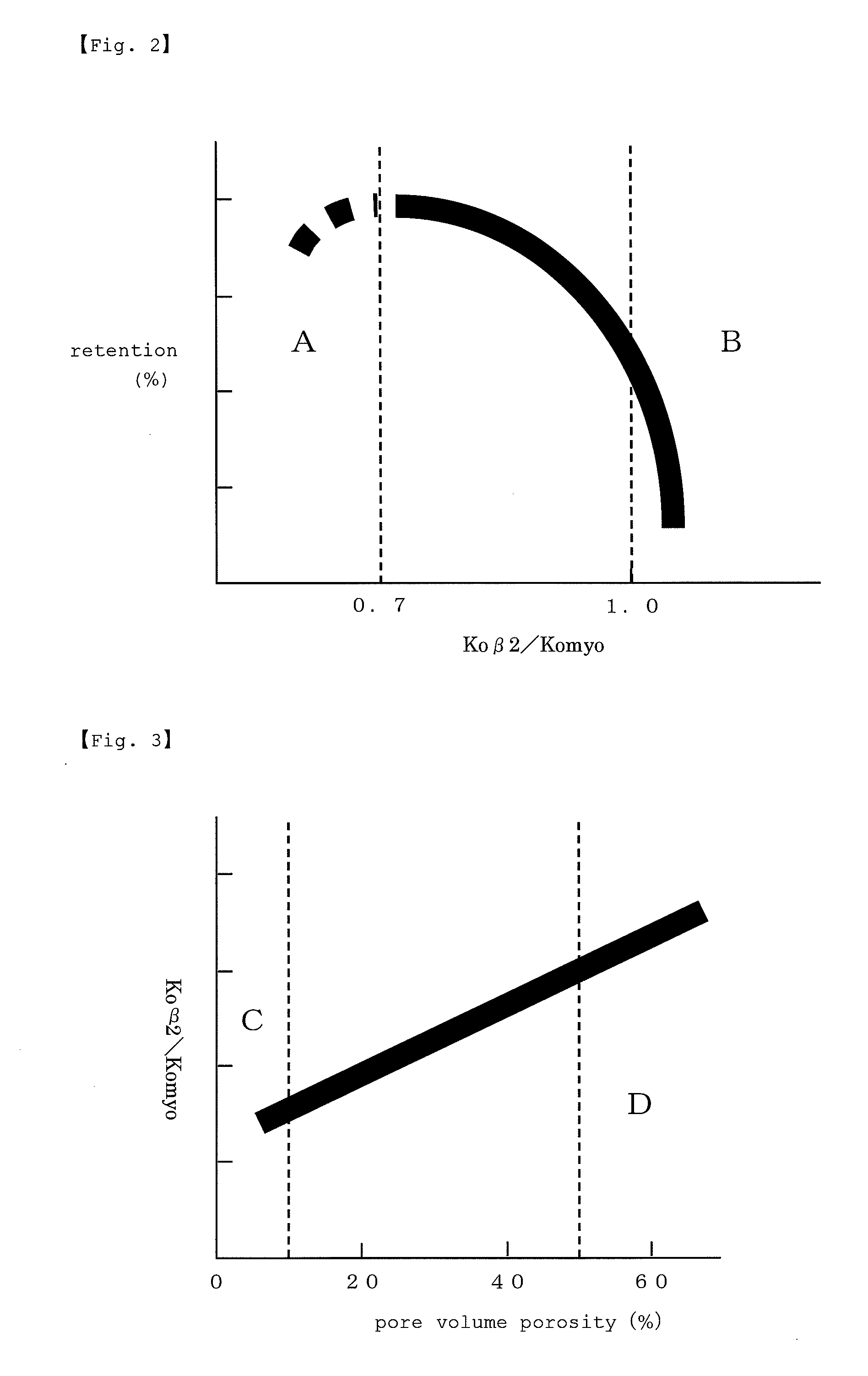Hollow fiber membrane with excellent performance stability and blood purifier and method for producing hollow fiber membrane
a technology of performance stability and hollow fiber membrane, which is applied in the field of hollow fiber membrane, can solve the problems of increased number of patients who require dialyse, leakage of useful blood proteins, and membranes with such characteristic structures, and achieves stable performance in the blood system, high reproducibility, and high water permeability.
- Summary
- Abstract
- Description
- Claims
- Application Information
AI Technical Summary
Benefits of technology
Problems solved by technology
Method used
Image
Examples
example 1
[0117]Cellulose triacetate (manufactured by DAICEL CHEMICAL INDUSTRIES, LTD.) (19% by mass), N-methyl-2-pyrrolidone (NMP, manufactured by Mitsubishi Chemical Corporation) (56.7% by mass) and triethylene glycol (TEG, manufactured by MITSUI CHEMICALS, INC.) (24.3% by mass) were heated and homogeneously melted to form a membrane-forming solution, which was then defoamed. The resultant membrane-forming solution was allowed to sequentially pass through a two-staged sintered filter of 10 μm and 5 μm, and was then discharged from a tube-in-orifice nozzle heated to 102° C., together with previously deaired liquid paraffin as a hollow portion-forming material. The resulting semi-solid hollow fiber membrane was allowed to pass through a 70 mm drying section regulated at 12° C., sealed from an external air by a spinning tube, and was then solidified in an aqueous 20% by mass NMP / TEG (7 / 3) solution of 40° C., undergoing a water-washing bath of 30° C., followed by a 60% by mass glycerin bath of ...
example 2
[0120]Cellulose triacetate (manufactured by DAICEL CHEMICAL INDUSTRIES, LTD.) (18% by mass), NMP (57.4% by mass) and TEG (24.6% by mass) were homogeneously melted to form a membrane-forming solution, which was then defoamed. The resultant membrane-forming solution was allowed to sequentially pass through a two-staged sintered filter of 10 μm and 5 μm, and was then discharged from a tube-in-orifice nozzle heated to 105° C., together with previously deaired liquid paraffin as a hollow portion-forming material. The resulting semi-solid hollow fiber membrane was allowed to pass through a 50 mm drying section under a homogeneous atmosphere regulated to 5° C., sealed from an external air by a spinning tube, and was then solidified in an aqueous 20% by mass NMP / TEG (7 / 3) solution of 40° C., undergoing a water-washing bath of 30° C., followed by a 60% by mass glycerin bath of 50° C. The resulting hollow fiber membrane was then dried in a drier and was wound up at a spinning rate of 85 m / min...
example 3
[0123]Polyether sulfone (highly polymerized polyether sulfone 7300P, manufactured by Sumitomo Chemical Company, Limited) (23% by mass), polyvinyl pyrrolidone (PVP K-90, manufactured by BASF) (2% by mass), N-methyl-2-pyrrolidone (NMP, manufactured by Mitsubishi Chemical Corporation) (45% by mass) and polyethylene glycol (PEG 200, manufactured by DAI-ICHI KOGYO SEIYAKU CO., LTD.) (30% by mass) were homogeneously melted to form a membrane-forming solution, which was then defoamed. The resultant membrane-forming solution was allowed to sequentially pass through a two-staged sintered filter of 10 μm and 5 μm, and was then discharged from a tube-in-orifice nozzle heated to 128° C., together with a nitrogen gas as a hollow portion-forming material. The resulting semi-solid hollow fiber membrane was allowed to pass through a 8 mm drying section regulated at 10° C., sealed from an external air by a spinning tube, and was then solidified in an aqueous 40% by mass NMP / PEG 200 (6 / 4) solution of...
PUM
| Property | Measurement | Unit |
|---|---|---|
| Length | aaaaa | aaaaa |
| Fraction | aaaaa | aaaaa |
| Fraction | aaaaa | aaaaa |
Abstract
Description
Claims
Application Information
 Login to View More
Login to View More - R&D
- Intellectual Property
- Life Sciences
- Materials
- Tech Scout
- Unparalleled Data Quality
- Higher Quality Content
- 60% Fewer Hallucinations
Browse by: Latest US Patents, China's latest patents, Technical Efficacy Thesaurus, Application Domain, Technology Topic, Popular Technical Reports.
© 2025 PatSnap. All rights reserved.Legal|Privacy policy|Modern Slavery Act Transparency Statement|Sitemap|About US| Contact US: help@patsnap.com



